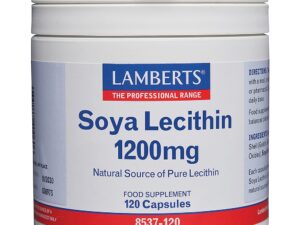Description
Ethyl Vanillin: The Flavor Enhancer You Should Know
Ethyl vanillin, a synthetic flavoring compound, is a fascinating and widely used ingredient that brings a warm, sweet, and vanilla-like aroma and taste to countless food products, beverages, and even fragrances. While often overshadowed by its natural counterpart, vanillin extracted from vanilla beans, ethyl vanillin possesses unique characteristics that make it a valuable asset in the food industry.
What is Ethyl Vanillin?
Chemically, ethyl vanillin is a derivative of vanillin, with an ethyl group (C2H5) replacing a methyl group (CH3). This seemingly small change significantly impacts its flavor profile. Ethyl vanillin boasts a flavor profile that is reportedly 2-4 times stronger than vanillin extracted from vanilla beans. This heightened potency allows food manufacturers to use less of the compound to achieve the desired vanilla taste, making it a cost-effective alternative to natural vanilla extract.
Where is it Found?
You’ve likely encountered ethyl vanillin in many foods and beverages, often without even realizing it was there. It’s commonly found in:
- Baked goods: Cakes, cookies, pastries, and muffins often use ethyl vanillin for its intense vanilla flavor and stability at high temperatures.
- Chocolate and confectionery: It enhances the sweetness and contributes a creamy, vanilla note to chocolates, candies, and ice cream.
- Beverages: Ethyl vanillin is used in flavored milk, soft drinks, and alcoholic beverages to impart a vanilla flavor or complement other ingredients.
- Processed foods: Cereal, pudding, yogurt, and other processed foods often include ethyl vanillin to enhance their flavor profiles.
Advantages of Ethyl Vanillin
Beyond its cost-effectiveness, ethyl vanillin offers several advantages:
- Strength: Its higher potency means less is needed, contributing to cost savings and potentially reducing the impact on a product’s texture or appearance.
- Stability: Ethyl vanillin is more stable than natural vanillin, especially at high temperatures during baking or processing. This ensures the flavor doesn’t degrade or dissipate easily.
- Consistency: As a synthetic compound, ethyl vanillin offers consistent flavor profiles, eliminating the batch-to-batch variations that can occur with natural vanilla.
- Availability: Unlike vanilla beans, which can face supply chain challenges and price fluctuations, ethyl vanillin is readily available and affordable.
Is Ethyl Vanillin Safe?
Ethyl vanillin is generally recognized as safe (GRAS) by regulatory bodies like the FDA, meaning it’s considered safe for human consumption when used in accordance with good manufacturing practices. Extensive testing and research have supported its safety. However, as with any ingredient, individual sensitivities or allergies are always possible.
Ethyl Vanillin vs. Vanillin: Key Differences
While both compounds provide a vanilla flavor, they have notable differences:
| Feature | Vanillin (Natural) | Ethyl Vanillin (Synthetic) |
|---|---|---|
| Source | Vanilla beans, produced during fermentation. | Synthetically produced in laboratories. |
| Flavor Profile | More complex, nuanced, and creamy with woody undertones. | Stronger, sweeter, and more intense vanilla flavor. |
| Potency | Lower potency. | Higher potency (2-4 times stronger). |
| Cost | Significantly more expensive. | More affordable. |
| Availability | Can be subject to supply chain issues and price fluctuations. | Readily available and more stable in price. |
The Future of Ethyl Vanillin
Ethyl vanillin will likely remain a crucial flavor enhancer in the food industry for its cost-effectiveness, strength, and stability. As consumer awareness grows, manufacturers may increasingly highlight the presence of ethyl vanillin on product labels, allowing consumers to make informed choices.
Conclusion
Ethyl vanillin is a powerful and versatile flavoring compound that plays a significant role in the food industry. While it may not possess the same complex nuances as natural vanilla, its affordability, stability, and strong flavor profile make it a valuable tool for creating delicious and accessible products. Understanding its properties and differences from natural vanillin allows us to appreciate its place in the world of flavor.





















Reviews
There are no reviews yet.